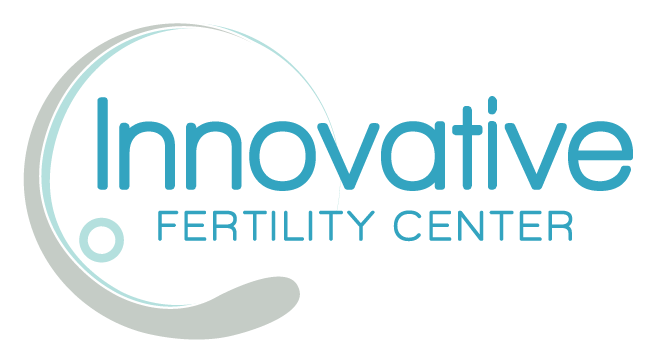Poor Responders
Infertility Treatments: Poor Responders find Successful Treatment at Innovative Fertility
Several recent articles in Fertility and Sterility, a world renowned journal on infertility research, have reviewed various options available for the treatment of the woman undergoing in vitro fertilization who does not produce sufficient eggs. Doctors use the phrase “poor responder” to describe these patients. Patients who are poor responders are one of the most difficult patients to treat.
The exact definition of the poor responder is argued, but generally it is a woman over age 40, one who produces three or fewer eggs during ovarian stimulation, or has abnormal tests of ovarian egg reserve.
There are at least 10 to 20 different protocols proposed for the treatment of the poor responder. What this tells us that there are probably a variety of etiologies for the poor responder and that no well-defined solution has been found as yet.
Poor Responders, DHEA & Growth Hormone Supplementation
In one review article in Fertility and Sterility discussed the use of androgen supplementation to increase egg count.
Androgens are male hormones which are precursors of the female hormones.
It has long been noted that in certain abnormal conditions where women have high androgen levels, they also have an excessive number of small precursor eggs known as antral follicles. This finding was the rationale for treating women who have normal androgen levels and poor egg counts with supplemental androgens to try to increase their egg number.
At Innovative Fertility Center we often treat patients with this condition by using a male precursor hormone known as DHEA. DHEA is taken three times daily by the patient for up to two months prior to their egg retrieval. Antral follicle count is often improved. We had good success using DHEA in these difficult situations and often find a greater number of oocytes (eggs) and better quality of embryos. Innovative Fertility Center will continue to use and evaluate this protocol with patient consent.
Growth Hormone, although an expensive option can sometimes help Poor Responders
Another medicine added to the stimulation protocols of poor responders is Growth Hormone. This is a very expensive medicine and its use is also not well-defined. Nevertheless there have been several trials using growth hormone at various dosages and in various regiments which have yielded higher quality embryos and higher live birth rates.
At Innovative Fertility Center we occasionally use growth hormone especially in patients where we expect very limited number of embryos or have seen embryos of poor quality. This medicine like others discussed today is not FDA approved and requires discussion with the patient so that there is informed consent.
Natural Cycle Stimulation Options
Oftentimes when the physician evaluates the patient and is worried that their will be a poor egg response, the initial stimulation dose that is recommended is very high. An alternate approach to the woman who produces very few eggs despite use of very high doses of stimulation medicine is to instead use a very low dose stimulation, or Natural Cycle approach.
The rationale of Natural Cycle Stimulation is that if thousands of dollars of stimulation medicines produced no more than a few eggs, why not stimulate minimally in a near natural cycle, get one solid egg and avoid the high costs of excessive medicines.
In addition there is a possibility that eggs produced in a more natural cycle will be of higher quality. At Innovative Fertility Center we use a Minimal Stimulation approach which involves very low doses of gonadotropins only at the very end of the stimulation cycle in combination with medicines to prevent premature release of the egg.
This protocol is especially successful with women of younger age who are poor responders but also can also be tried in the older women where egg response is expected to be minimal. This approach saves costs, and while there is a lower fertility rate per cycle, minimal stimulation cycles can be cost beneficial in the long run.
- Fertility Treatments
- Super Ovulation
- Injectable Fertility Medications
- PRP for Ovarian Rejuvenation
- PRP for Uterine Infusion
- Advanced Maternal Age Pregnancy
- Poor Responders
- Gender Selection
- Gender Selection with IVF
- Frozen Embryo IVF Cycles
- Egg Freezing
- Egg Freezing Candidates
- When to Freeze Eggs
- Egg Freezing Process
- Oncofertility
- Fertility Preservation for Cancer
- Fertility Surgery
- Surgery for Blocked Tubes
- Treatment for Uterine Polyps
- Surgical Sperm Retrieval
- MESA
- TESE, Testicular Sperm Extraction
- Treating Endometriosis
- Unexplained Infertility Treatments
- Recurrent Pregnancy Loss
- Treatment for PCOS
- Fertility Treatments for Single Women
- IVF for Single Motherhood
- Egg Freezing and Single Motherhood
- Fertility Treatments
- Super Ovulation
- Injectable Fertility Medications
- PRP for Ovarian Rejuvenation
- PRP for Uterine Infusion
- Advanced Maternal Age Pregnancy
- Poor Responders
- Gender Selection
- Gender Selection with IVF
- Frozen Embryo IVF Cycles
- Egg Freezing
- Egg Freezing Candidates
- When to Freeze Eggs
- Egg Freezing Process
- Oncofertility
- Fertility Preservation for Cancer
- Fertility Surgery
- Surgery for Blocked Tubes
- Treatment for Uterine Polyps
- Surgical Sperm Retrieval
- MESA
- TESE, Testicular Sperm Extraction
- Treating Endometriosis
- Unexplained Infertility Treatments
- Recurrent Pregnancy Loss
- Treatment for PCOS
- Fertility Treatments for Single Women
- IVF for Single Motherhood
- Egg Freezing and Single Motherhood
